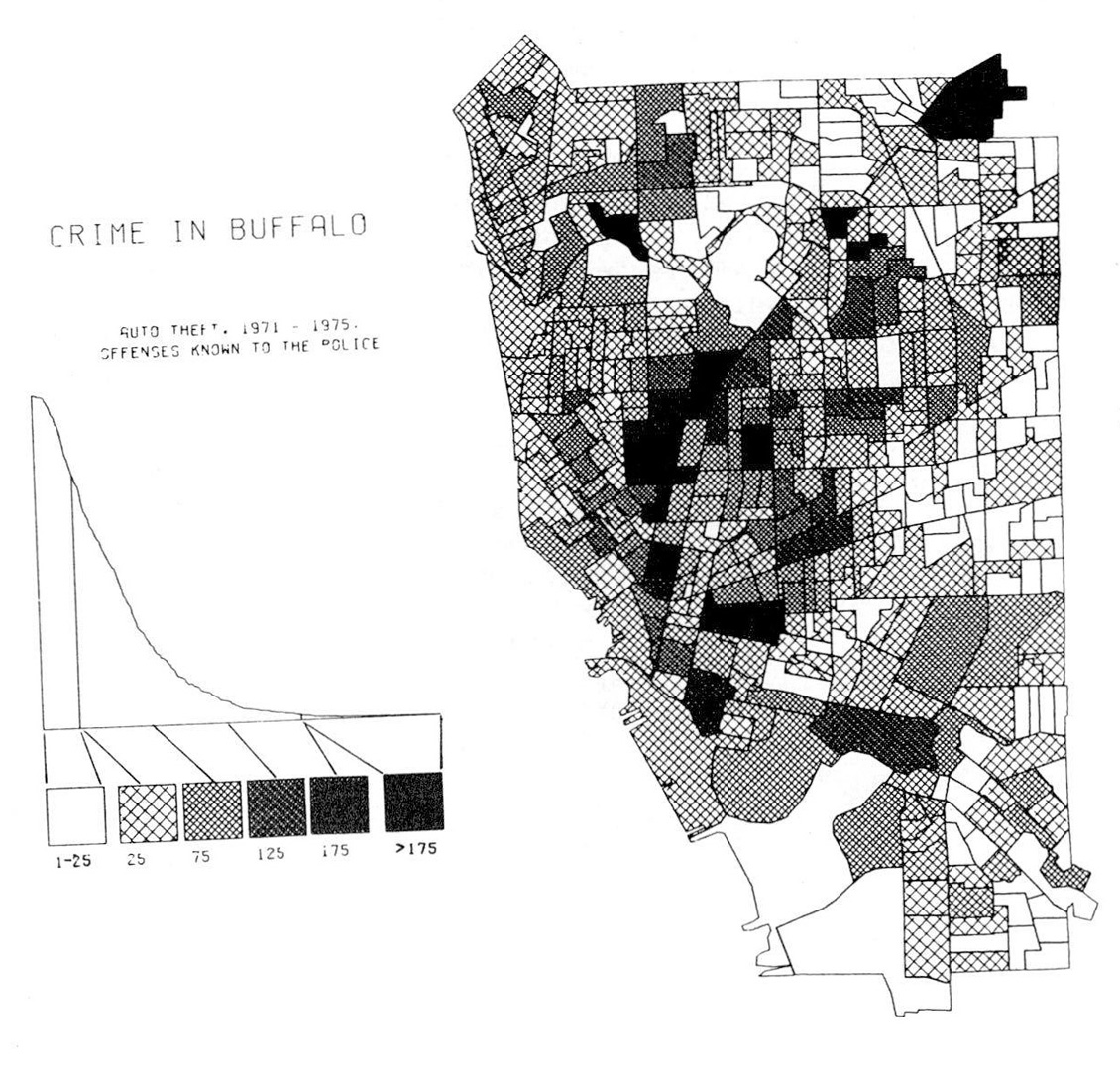“The buffalo crime mapping system: a design strategy for the display and analysis of spatially referenced crime data” by Brassel, Utano and Hanson
Conference:
Type(s):
Title:
- The buffalo crime mapping system: a design strategy for the display and analysis of spatially referenced crime data
Presenter(s)/Author(s):
Abstract:
This paper presents the design strategy for a crime information system with vast capabilities for production of and experimentationwith maps. Detailed disaggregated crime information from the city of Buffalo, New York forms the primary data base for the system. This series of crime files, together with socio-economic data from the Census, are integrated into a geographic information system denoted as the Crime Analysis and Research Package (CARP). The Buffalo Crime Mapping System as a part of CARP is a collection of data files and routines designed for versatile display and analysis of spatially referenced crime data. It deals with three types of information: crime, census, and spatial reference information containing various geometrical indices such as block group boundaries and centroids of statistical units. The boundary information is provided by a flexible arc structure. The three major data files are stored as random access files and are interfaced with various display procedures such as choropleth, graduated circle, and dot mapping programs. The user provides the system with a set of instructions as to the desired map type and its display parameters. A-driver routine then reads the map type instruction and calls the appropriate mapping routine. This mapping program then proceeds by reading the user parameters, accesses the necessary base files, and produces the final map. At its present stage, the system is batch oriented and does not provide for interactive and/or real-time communication features.
References:
1. Bertin, Jacques, 1967. Semiologie Graphique. Hague, Netherlands: Mouton. 426 pgs.
2. Brassel, K., 1975. “Efficient Visualization of Complex Data Sets” Progress Report of a Research Project, unpublished manuscript, 16 pgs.
3. Bureau of the Census, 1970. Census Use Study, Report No. 4: The DIME Geocoding System, 38 pgs.
4. Hanson, Perry O., “A Geographic Information System for Criminal Research in Buffalo, New York”, Proceedings of the Middle States Division, Assoc. of American Geographers, (8,1974) 51-55.
5. Hanson, Perry O., K. Brassel and J. J. Utano, 1977. A Crime Analysis Research Package (CARP): A Strategy for the Display and Analysis of Spatially Referenced Crime Data, Technical Papers R-77/4, Geographic Information Systems Laboratory, State Univ. of New York at Buffalo, 13 pgs.
6. Hanson, Perry O. and Jack J. Utano, “The Utilization of Police Information Systems – A Research Strategy” forthcoming in Review of Public Data Use.
7. Laboratory for Computer Graphics and Spatial Analysis, Lab-Log, Harvard University, Graduate School of Design, January, 1977.
8. Peucker, T. K. and N. Chrisman, April 1975. “Cartographic Data Structures” in The American Cartographer, Vol. 2, No. 1, pp 55-69.
9. Rens, Frank, 1975. Private correspondence.
10. Tobler, Waldo, 1973. “Choropleth Maps Without Class Intervals?”, Geographical Analysis, Vol.5, 262-265.




